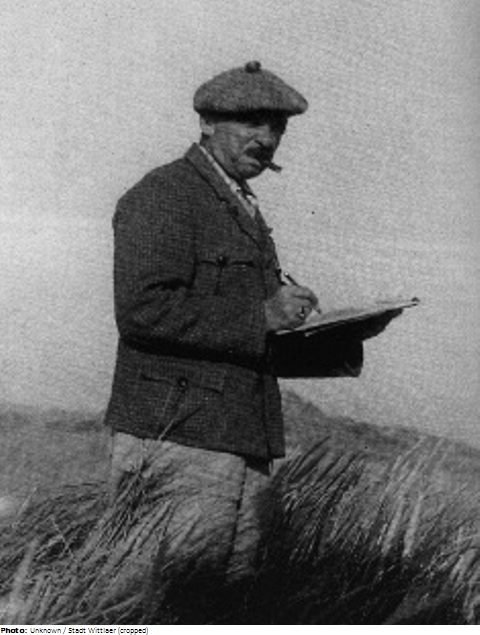Max Clarenbach

Biographical information
| Roles | Competed in Olympic Games |
|---|---|
| Sex | Male |
| Full name | Maximilien "Max"•Clarenbach |
| Used name | Max•Clarenbach |
| Born | 19 May 1880 in Neuss, Nordrhein-Westfalen (GER) |
| Died | 9 July 1952 in Wittlaer, Düsseldorf, Nordrhein-Westfalen (GER) |
| NOC |  Germany Germany |
Biography
Born in poor circumstances, Max Clarenbach became a full orphan at the age of 12 years. He was primarily a landscape painter influenced by the French Impressionists, who later studied at the Düsseldorf Art Academy, where he later taught from 1917-45. At the end of the 19th century, he frequently traveled to Holland. During World War I, he served alternatively in a military hospital and briefly as a war painter on the Eastern Front.
Between 1923-30, Clarenbach was concerned with theater and sports scenes. Nevertheless, he especially concentrated on winter motifs and also on the atmospheric observation of the other seasons. While the landscape of the Lower Rhine was initially the center of his work, he later painted in the Westerwald, Bergisch Land, the Ruhr Valley, and frequently from 1912 in the Sauerland. From 1937, he also carried out commissions from the Wehrmacht and exhibited regularly at the Great German Art Exhibition until 1944.
Clarenbach’s style was called “Rhenish decorative impressionism”. The painting Golf(-player) at Nordwijk was lent from the collection of silk manufacturer Schniewind in Elberfeld and was already exhibited in 1926 at the GeSoLei exhibition in Düsseldorf.
Results
| Games | Discipline (Sport) / Event | NOC / Team | Pos | Medal | As | |
|---|---|---|---|---|---|---|
| 1928 Summer Olympics | Art Competitions |  GER GER |
Max Clarenbach | |||
| Painting, Paintings, Open (Olympic) | ||||||
| 1932 Summer Olympics | Art Competitions |  GER GER |
Max Clarenbach | |||
| Painting, Paintings, Open (Olympic) |